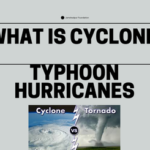The National Geospatial Policy,2022:Basics Explained

The Ministry of Science and Technology notified the National Geospatial Policy,2022.
Guideline aims to promote the country’s geospatial data industry and develop a national framework to use such data for improving citizen services, and more.
Besides developing geospatial infrastructures, skill and knowledge, standards, businesses, among others, The policy will seek to develop a national geospatial data framework, and enable “easy availability” of data to businesses and general public.
· The policy aims to develop high resolution topographical survey and mapping, and a high-accuracy digital elevation model for the entire country by 2030.
· By 2025, the government will seek to put in place a legal framework that “supports liberalisation of the geospatial sector, and democratisation of data for enhanced commercialisation with value added services.“
· The government will look to establish an Integrated Data and Information Framework, under which a Geospatial Knowledge Infrastructure (GKI) will be developed by 2030.
· By 2035, goals of usage of geospatial data will include mapping of sub-surface infrastructure in major cities and towns across India, and development of high resolution, accurate bathymetric geospatial data (resources and economy of inland waters, and sea
surface topography of shallow and deep seas) to support India’s ‘Blue Economy’.
It also outlines the creation of a national-level apex body, Geospatial Data Promotion and Development Committee (GDPDC), which will offer details regarding the use of geospatial data in governance across specific ministries, and enable the development of private startups and companies to work on specific projects.
It will also promote the use of National Digital Twin, which refers to
an ecosystem of high resolution data to promote connected digital twins among private businesses “with secure and interoperable data sharing.”
BASICS
Geospatial data is data about objects, events, or phenomena that have a location on the surface of the earth.
The location may be static in the short-term (e.g., the location of a road, an earthquake event, children living in poverty), or dynamic (e.g., a moving vehicle or pedestrian, the spread of an infectious disease).
Geospatial data combines location information (usually coordinates
on the earth), attribute information (the characteristics of the object, event, or phenomena concerned), and often also temporal information (the time or life span at which the location and attributes exist.





0 Comments